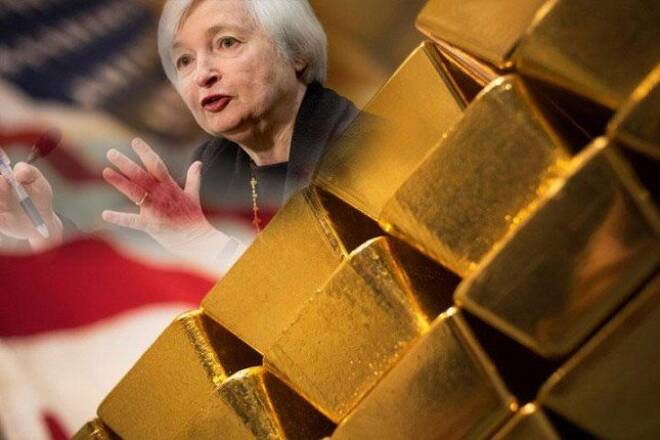Advertisement
Advertisement
Falling Yields and Rising Gold Telling Markets Fed Will Limit Future Rate Hikes
By:
When the Fed raised its benchmark interest rate last December, it forecast three rates during 2017. At the time, it cited an improving economy and labor
When the Fed raised its benchmark interest rate last December, it forecast three rates during 2017. At the time, it cited an improving economy and labor market as the reasons for its lofty projections. It also projected slightly faster increases the next few years amid the prospect of a massive government stimulus.
The forecast for three rate hikes was up from two in September 2016. It also maintained their projection of three rate hikes each in 2018 and 2019, according to median estimates. The central bank also predicted the fed funds rate will be 1.4% at the end of 2017, 2.1% at the end of 2018 and 2.9% at the end of 2019, up from forecasts of 1.1%, 1.9% and 2.6%, respectively in September 2016. The Fed also reiterated rate increases will be “gradual.”
Earlier in the year, some economists were also predicting the Fed would speed up its rate-hike timetable in the wake of President Trump’s victory and his aggressive economic agenda which included health care reform, tax reform, banking deregulation and aggressive fiscal spending.
Fed officials essentially painted a generally bright picture of the economy, saying “the labor market has continued to strengthen” and “economic activity has been expanding at a moderate pace since midyear.”
Yields on 10-year Treasury Bonds rose, 30-year mortgage rates increased and the dollar strengthened.
Flashing forward to June 2017, I have to believe that the Fed will blow up its previous scenarios and projections, and rewrite its narrative for the remainder of the year.
Although the Federal Reserve is poised to raise interest rates at their two-day meeting on June 13 – 14, the reactions in the financial markets on Friday show that investors increasingly doubt the central bank’s projection for additional hikes in 2017 following soft reports on U.S. employment and inflation.
As of Friday’s close, investors have priced in an 83 percent chance of a Fed rate hike in June. However, trading in futures contracts shows odds of a September increase have dropped to just 25 percent, and investors are now pricing in less than one hike in 2018 for the first time since the night before the U.S. elections in November.
If the movement in the Fed funds were my only indicator then I would be less confident in my expectations, but the rally in stocks and gold and the plunge in U.S. Treasury yields and the U.S. Dollar have me convinced that we may not see another rate hike after June. I’ll become more certain throughout the rest of the year if inflation and the labor markets continue to struggle, and if Trump’s economic agenda continues to face delays.
About the Author
James Hyerczykauthor
James Hyerczyk is a U.S. based seasoned technical analyst and educator with over 40 years of experience in market analysis and trading, specializing in chart patterns and price movement. He is the author of two books on technical analysis and has a background in both futures and stock markets.
Advertisement
